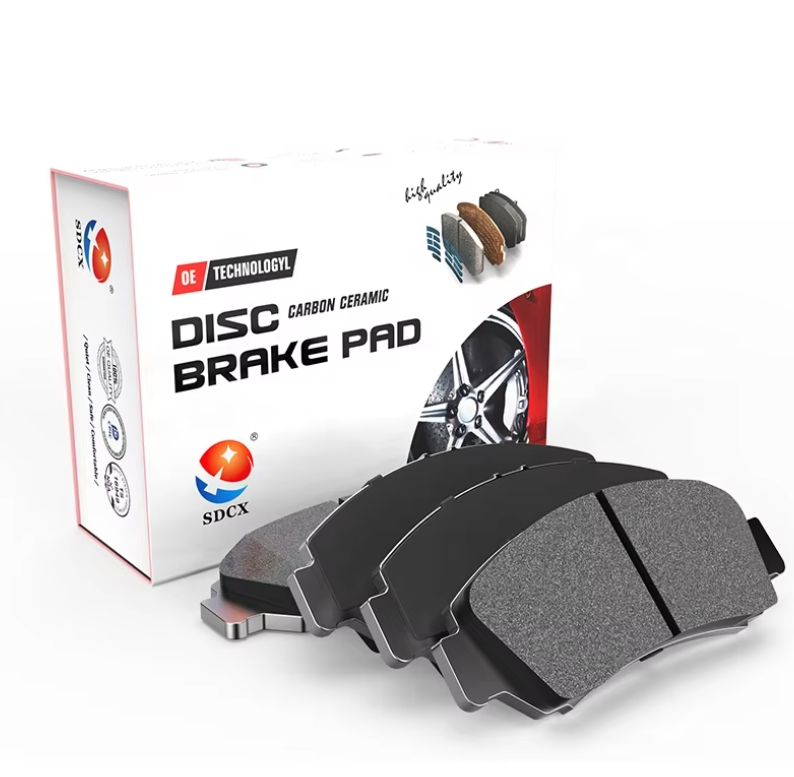Superior Heat Dissipation for Consistent Braking
Ceramic Composition and Thermal Stability
Ceramic brake pads are made from materials that handle heat really well, sometimes better than regular brake parts. Because they stay stable at high temps, these pads don't lose effectiveness when things get hot under the hood, which is exactly what happens with standard brakes during long descents or heavy braking situations. Tests show ceramic materials hold together even after being subjected to temperatures above 1000 degrees Fahrenheit, so the brakes keep working reliably no matter how intense the driving conditions become. This heat resistance solves many problems that plague other types of brake materials, making ceramic brakes a much better option for anyone who wants their vehicle to stop properly without worrying about performance dropping off when things heat up.
Reduced Brake Fade in High-Temperature Conditions
Ceramic brake pads really cut down on brake fade, which happens when brakes lose stopping power at high temps. Testing shows these pads actually have about 30 percent less fade than both semi-metallic and organic alternatives during tough driving situations. The difference matters a lot because ceramic pads keep working properly even when things get hot. For sports cars and trucks that need dependable stops every time, this makes all the difference. Drivers don't want their brakes to fail just because they've been pushing hard on the road.
Comparison with Semi-Metallic and Organic Pads
Ceramic brake pads stand apart from their semi-metallic and organic counterparts because they tend to last longer and need less frequent replacement. The problem with semi-metallic pads is that they transfer heat too quickly, which causes inconsistent braking performance when temperatures rise. Ceramic materials handle this better, keeping things steady even during heavy use. Organic pads are another story entirely. They create a lot of dust around wheels and simply don't hold up as well over time. Most drivers find ceramics strike just the right balance between performance and longevity. According to some research done by major brake companies, ceramic options typically outlast semi-metallic ones by about half. That makes sense for anyone looking to improve their car's stopping power without constantly replacing worn parts.
Enhanced Stopping Power and Safety
Optimized Friction for Responsive Braking
Ceramic brake pads boost car performance because of their special makeup that works really well with friction. They give drivers better stopping power no matter what kind of roads they're on, something that matters a lot when someone needs to stop suddenly. Traditional brake stuff just isn't as good at this. Ceramic pads keep working consistently even when things get hot, so the car doesn't start taking longer to stop. Tests show cars with ceramic brakes actually stop faster compared to older types like semi-metallic or organic pads. This means safer driving overall, especially in situations where every inch counts.
Integration with Modern Brake Systems (ABS/ESC)
Ceramic brake pads work really well with modern car tech like ABS and ESC systems. When drivers hit the brakes hard or need sudden stops, this compatibility makes a big difference in how the car handles and stays stable on the road. The way ceramic pads interact with these electronic systems actually helps cars stop faster than traditional materials can manage. Mechanics who install these parts often point out that good quality ceramic pads make all the difference when it comes to getting those safety features to function properly during emergencies. Many auto shops now stock ceramic options because they know customers want better stopping power without sacrificing comfort or creating excessive dust around their wheels.
Performance in Wet and Dry Conditions
Ceramic brake pads really stand out when it comes to handling different road conditions. They work well whether the roads are dry or covered in rain, keeping good stopping power without soaking up too much water. Some actual testing shows these ceramic brakes actually cut down stopping distance quite a bit in wet conditions compared to older types like organic or semi-metallic pads. Drivers notice this difference day to day, particularly when bad weather hits. Safety becomes much easier to maintain because people don't have to second guess their brakes. Most car owners who've switched over mention they feel much more confident behind the wheel knowing their brakes will respond reliably no matter what kind of weather surprises them. That peace of mind makes all the difference in real world driving situations.
Quiet Operation and Reduced Brake Dust
Noise-Dampening Properties of Ceramic Materials
Ceramic brake pads are made with special materials designed to cut down on the annoying squeaks and rattles when stopping, which makes rides quieter overall. Research indicates these ceramic components can bring brake noise levels down around 70 percent, so they work really well in cities and towns where too much noise is becoming an issue for many drivers. Car sound specialists tend to recommend going with ceramic options because they know how much difference it makes inside the car cabin, turning what could be an unpleasant experience into something much smoother and less stressful for everyone onboard.
Low Dust Production for Cleaner Wheels
Ceramic brake pads create way less brake dust than their organic or semi-metallic counterparts, so car wheels stay cleaner for much longer time. Less dust means mechanics don't have to clean them as often, and it's better for the environment too since there's just not as much fine particles floating around. People who work on cars all day say this matters a lot because brake dust really eats away at wheel finishes over time. The wheels look nicer obviously, but the parts last longer too when they aren't constantly getting covered in this gritty stuff from regular braking.
Impact on Vehicle Aesthetics and Maintenance
Ceramic brake pads produce less dust and noise compared to traditional options, which makes cars look cleaner and nicer overall. Car lovers and regular folks driving to work both appreciate this benefit. The fact that these pads stay cleaner means parts around them don't get worn down so fast either. Mechanics will tell anyone that this translates into money saved over time because there's just less stuff breaking down. Most people who've switched notice they spend way less time scrubbing grime off their wheels too. Some even say they barely need to clean them at all anymore, which frees up weekend hours for actual fun instead of battling stubborn brake dust buildup.
Frequently Asked Questions
What are the advantages of ceramic brake pads?
Ceramic brake pads offer several advantages, including exceptional thermal stability, reduced brake fade, optimized friction for responsive braking, minimal noise and dust production, and greater longevity and cost-effectiveness.
Do ceramic brake pads work well in wet conditions?
Yes, ceramic brake pads perform excellently in both wet and dry conditions. They offer effective braking without excessive water absorption, making them reliable in adverse weather.
How do ceramic brake pads compare to semi-metallic pads?
Compared to semi-metallic pads, ceramic brake pads provide more stable performance under high temperatures, create less dust, and reduce brake fade by 30%. They also tend to last up to 50% longer.
Are ceramic brake pads environmentally friendly?
Yes, ceramic brake pads are eco-friendly. They are made from sustainable materials and often involve eco-conscious manufacturing processes that lower their carbon footprint.
How do ceramic brake pads affect rotor wear?
Ceramic brake pads reduce rotor wear because they produce less friction and debris. This attribute extends the life of the rotors and reduces maintenance expenses.

